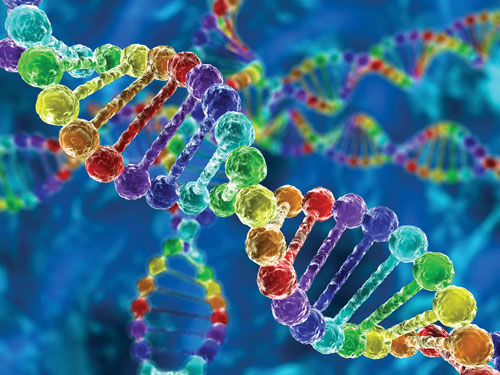
To maintain the integrity of the genome and support normal functioning and health, cells have evolved an intricate network of cell-cycle checkpoints and DNA damage repair tools, collectively known as DNA damage response or DDR. Now, researchers at the University of California, San Diego (UCSD), School of Medicine have developed a map that illustrates the system for addressing and repairing DNA damage.
The findings are published in Cell Systems.
“The DNA damage response (DDR) ensures error-free DNA replication and transcription and is disrupted in numerous diseases,” wrote the researchers. “An ongoing challenge is to determine the proteins orchestrating DDR and their organization into complexes, including constitutive interactions and those responding to genomic insult. Here, we use multi-conditional network analysis to systematically map DDR assemblies at multiple scales.”
To maintain the integrity of the genome and support normal functioning and health, cells have evolved an intricate network of cell-cycle checkpoints and DNA damage repair tools, collectively known as DDR. Researchers sought to better understand how DDR works and why it sometimes fails to provide new therapeutic opportunities to treat or cure the same diseases.
“The ongoing challenge, of course, is that DDR is an extremely complex system involving hundreds of different proteins assembling in different ways to address different problems,” said senior author Trey Ideker, PhD, professor at UCSD School of Medicine and UCSD Moores Cancer Center. “You can’t fix a problem with DDR until you understand how it works.”
The new reference map employs affinity purification mass spectrometry and a broad collection of multiomics data to develop a fuller picture: a hierarchical organization of 605 proteins in 109 assemblies that captures canonical repair mechanisms and proposes new DDR-associated proteins linked to stress, transport, and chromatin functions within cells.
“Experimental screens of ever-increasing scale are capturing interactions between genes or proteins in human cells, often beyond what has been described in the literature. They can, in principle, be used to create data-driven maps of DDR,” said first author Anton Kratz, PhD, formerly a research scientist in Ideker’s lab who now works at the System Biology Institute in Tokyo, Japan.
To address any screening challenges, the researchers measured new protein-protein interaction networks centered around 21 key DDR factors with and without DNA damage. They developed a machine learning approach to combine new data with existing data, and statistical analysis that showed the results significantly informed the resulting map.
“To me, two things were most revelatory,” said Kratz. “First, the sheer amount of novel proteins in the map. About 50% of the proteins included in the map following our data-driven paradigm were not included in the literature-curated maps considered here, justifying a data-driven approach to building the map.
“Second and related to that, membership to DDR is not a binary affair, but takes place on a continuum (and we quantify this continuum), extending to stress, transport, and chromatin functions.”
The researchers have created interactive software that will enable other scientists to investigate proteins and DDR interactions of specific interest. Kratz said scientists can also use the map as a component in visible machine learning systems that potentially could illuminate larger questions, such as how DDR is relevant in the transition from genotype (the genetic constitution of an individual organism) to phenotype (characteristics of an individual resulting from interaction of its genotype with the environment).











